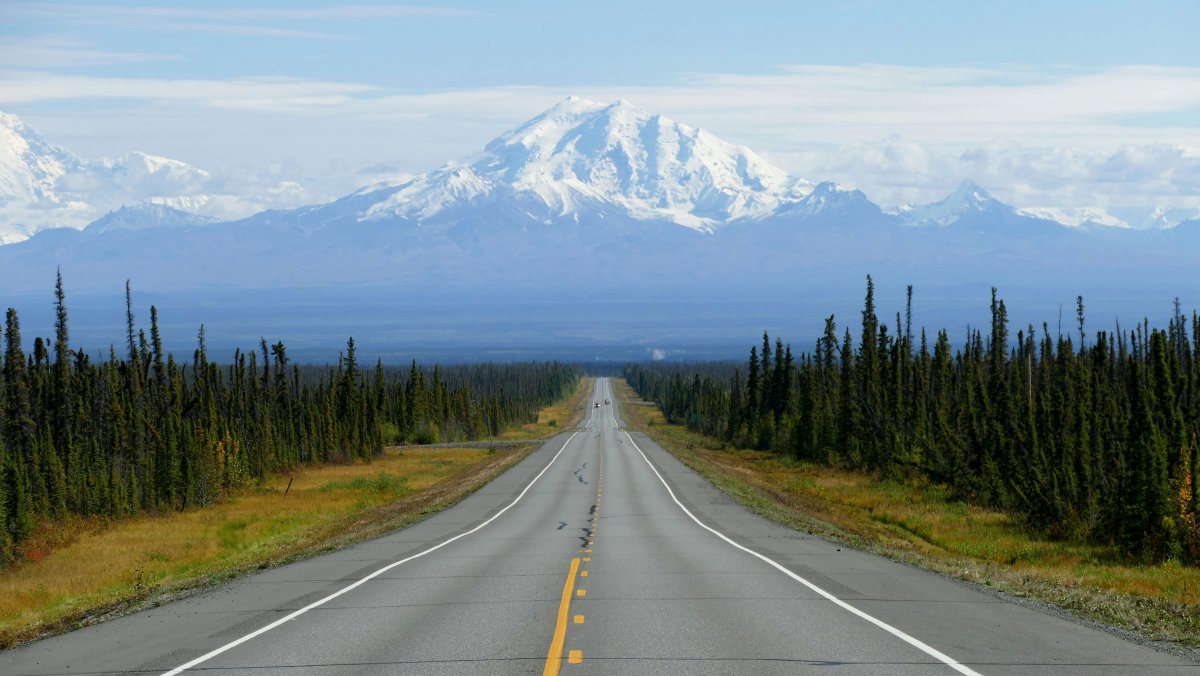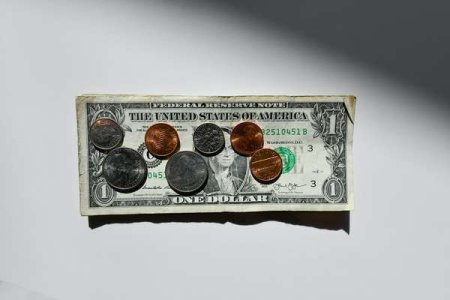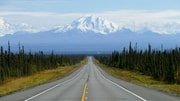
What would you think if the government sent every eligible resident in your state a check for $1,000 each year, simply for being a citizen?
It might sound too good to be true, but that's exactly what's happening right now in Alaska, where more than 600,000 eligible residents will begin receiving their 2025 Alaska Permanent Fund Dividend (PFD) of $1,000 starting in early October, with payments continuing through January 2026.
This isn’t a temporary boost or emergency aid—it’s a long-standing initiative that’s been shaping Alaska’s economy since 1982. At its core is a bold and enduring concept: distributing a portion of the state’s oil revenue directly to residents.
Over the decades, this approach has helped narrow income gaps and foster financial stability, earning Alaska a reputation among researchers as one of the most economically equal states in the country. It’s a powerful example of how resource wealth can be used to support everyday citizens, year after year.
How the system actually works
Think of the Alaska Permanent Fund as a statewide savings plan built for the people, by the people. Fueled by the state’s oil revenue and investment returns, it transforms a portion of Alaska’s natural resource wealth into an annual payout for eligible residents.
More than just a financial benefit, the PFD serves as a yearly affirmation of Alaska’s commitment to sharing prosperity. Managed by the Alaska Permanent Fund Corporation (AFPC), the program ensures that every qualifying Alaskan receives a direct share of the state’s long-term economic success.
To qualify for the 2025 payment, residents must have lived in Alaska for the entire 2024 calendar year, intend to remain permanent residents, and not claim residency elsewhere. Applicants must also have spent at least 72 consecutive hours physically present in Alaska during 2023 or 2024. There are some exceptions for military service, education, and medical treatment, but the rules are fairly straightforward. Individuals who were incarcerated or convicted of a felony in 2024 are not eligible to receive a dividend.
The payment process begins in early October, with those who applied online and chose direct deposit receiving their money first. Paper check recipients follow a week or so later, with additional payment dates scheduled through January 2026 for any delayed applications.
The economic reality behind this year's payment
Although a $1,000 payout may sound substantial, it marks a notable dip compared to recent years—about $700 less than 2024’s payment of $1,702
In fact, when adjusted for inflation, this year’s Alaska PFD is the smallest on record. Just last year, residents received around $1,700, and in 2022, the amount peaked at over $3,200.
The current figure reflects a shift in budget priorities and economic conditions, reminding Alaskans that while the dividend remains a valuable benefit, its size can vary significantly from year to year.
This year’s lower dividend isn’t a sign of trouble—it’s a strategic move to protect the fund’s long-term health. With oil revenues fluctuating and the state adjusting its budget priorities, officials opted for a flat $1,000 payout to help preserve the fund’s future stability.
As Alaska Department of Revenue Commissioner Adam Crum explained, the decision reflects a commitment to ensuring that generations to come can continue to share in the fund’s earnings.
Alaska PFD payment history (recent years)
- 2025: $1,000
- 2024: $1,702
- 2023: $1,312
- 2022: $3,284
- 2021: $1,114
- 2020: $992
Economic impact that goes far beyond the check
The impact of Alaska’s PFD goes far beyond the amount each resident receives—it’s woven into the fabric of the state’s economy.
According to the Alaska Department of Labor, each dollar distributed through the PFD can circulate locally up to three times, amplifying its effect. That means money spent on groceries, gas, or school supplies doesn’t just benefit the individual—it helps sustain small businesses, strengthen local services, and reinforce the economic resilience of entire communities.
It’s a ripple effect that turns a single payment into a shared boost for Alaska’s neighborhoods.
In Alaska’s remote communities, where winter expenses can skyrocket, the annual dividend offers more than financial relief—it’s a lifeline. For many residents, the payout helps cover essentials like heating fuel, food, and other cold-weather necessities.
Fairbanks local Laura Jensen put it plainly: “It’s not just bonus money—it’s what gets me through the season.” Her experience reflects a broader truth across the state: the Permanent Fund Dividend plays a vital role in helping Alaskans stay safe, warm, and prepared when temperatures drop and costs rise.
The emotional impact of the Alaska PFD goes beyond dollars and cents. Economists note that the program fosters a strong sense of belonging and shared ownership among residents.
By receiving a direct share of the state’s resource wealth, Alaskans are reminded each year that they have a personal stake in the land they call home—fueling pride, connection, and a deeper trust in the idea of collective prosperity.

From oil boom to permanent legacy
Alaska’s journey toward economic reinvestment began in the 1970s, when vast oil reserves were discovered in the North Slope region. Faced with a sudden surge in revenue, residents chose a forward-thinking path: instead of allowing the windfall to be spent outright, they voted to secure a portion of it for future generations.
In 1976, by a decisive margin, Alaskans approved a constitutional amendment to create the Permanent Fund—an investment account fueled by at least 25% of the state’s mineral income. This bold move laid the foundation for one of the most enduring public wealth-sharing programs in the United States.
The Alaska Permanent Fund began its journey on February 28, 1977, with an initial deposit of $734,000 in oil revenue—modest by today’s standards but monumental in vision.
Over the next four decades, careful stewardship by the APFC transformed that seed money into a financial powerhouse.
Today, the fund has surpassed $84 billion in value, placing it among the largest sovereign wealth funds in the world. It stands as a testament to long-term planning, disciplined investment, and the enduring impact of resource-based public wealth.
“The PFD isn’t just about money—it’s about community,” said officials from the Alaska Department of Revenue.
Looking ahead: sustainability and lessons learned
The Alaska Permanent Fund continues to navigate political and economic pressures, but it remains firmly backed by public sentiment.
In a 1999 survey, 84% of Alaskans opposed any government action that would divert earnings from the fund for other uses. This widespread support acts as a safeguard, helping to shield the program from policy shifts that could compromise its integrity.
Over the years, this collective stance has played a key role in preserving the fund’s original purpose: ensuring that Alaska’s resource wealth benefits its people directly.
The recent upswing in the Alaska Permanent Fund’s value comes at a critical moment.
As of June 30, the fund’s balance will help shape the size of next year’s payout, making every market fluctuation between now and then especially significant.
Although the current record high is promising, AFPC spokesperson Paulyn Swanson noted that market fluctuations could still affect the final valuation. With 20 days of potential volatility ahead, the fund’s value remains uncertain—and its influence on next year’s dividend will be closely monitored.
The Alaska Permanent Fund follows a carefully structured formula to maintain its long-term viability. Known as the Percent of Market Value (POMV) approach, this method calculates annual withdrawals based on a set percentage of the fund’s average value over five of the past six fiscal years.
This strategy helps stabilize state revenue while protecting the fund from excessive draws. By law, the withdrawal rate was capped at 5.25% through fiscal year 2021 and lowered to 5% starting in 2022, ensuring that the fund can continue supporting future generations without compromising its core investment strength.
The broader lesson for policymakers
What sets Alaska’s dividend program apart isn’t just its decades-long run—it’s the way it turns natural resource wealth into a unifying force.
The 2025 PFD arrives at a time of global uncertainty, yet it continues to offer Alaskans a sense of consistency, equity, and shared purpose. This annual distribution reminds residents that prosperity can be both personal and collective.
The program has survived multiple economic downturns, political changes, and social challenges precisely because it enjoys broad public support and operates under constitutional protection. It's a model that shows how resource wealth can be transformed into permanent community benefit rather than temporary government spending.
For Alaskans checking their bank accounts in the coming weeks, that $1,000 represents much more than a payment—it's a tangible reminder that their state's natural wealth belongs to all its people.
What do you think about Alaska's approach to sharing resource wealth? Could similar programs work in other states? We'd love to hear your thoughts on this fascinating example of community resource sharing.






